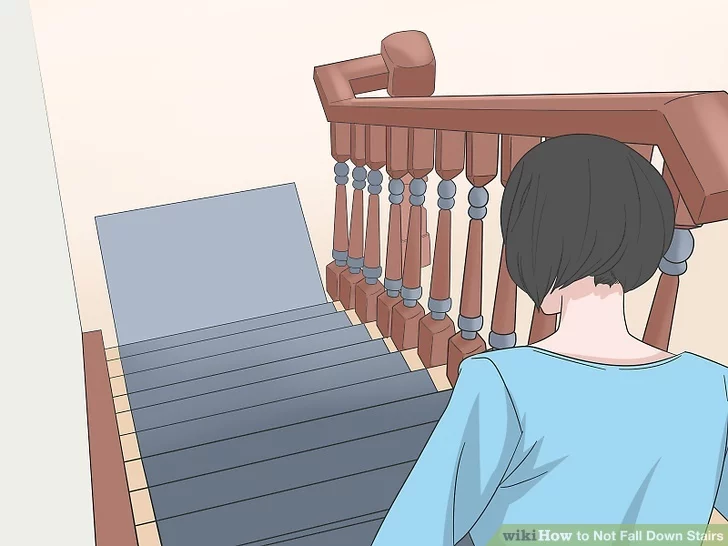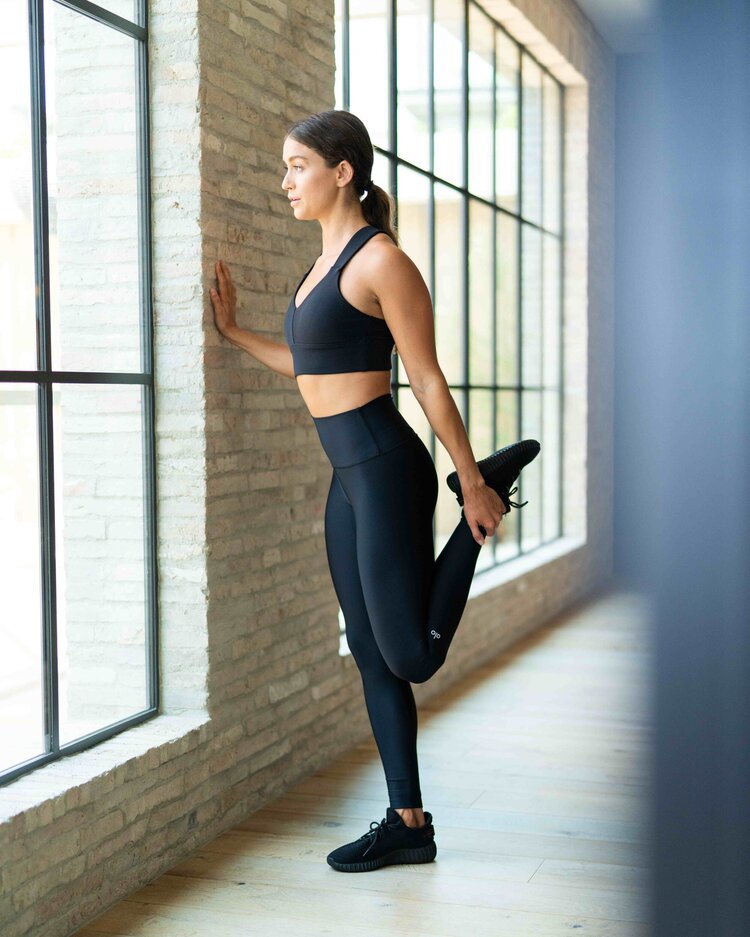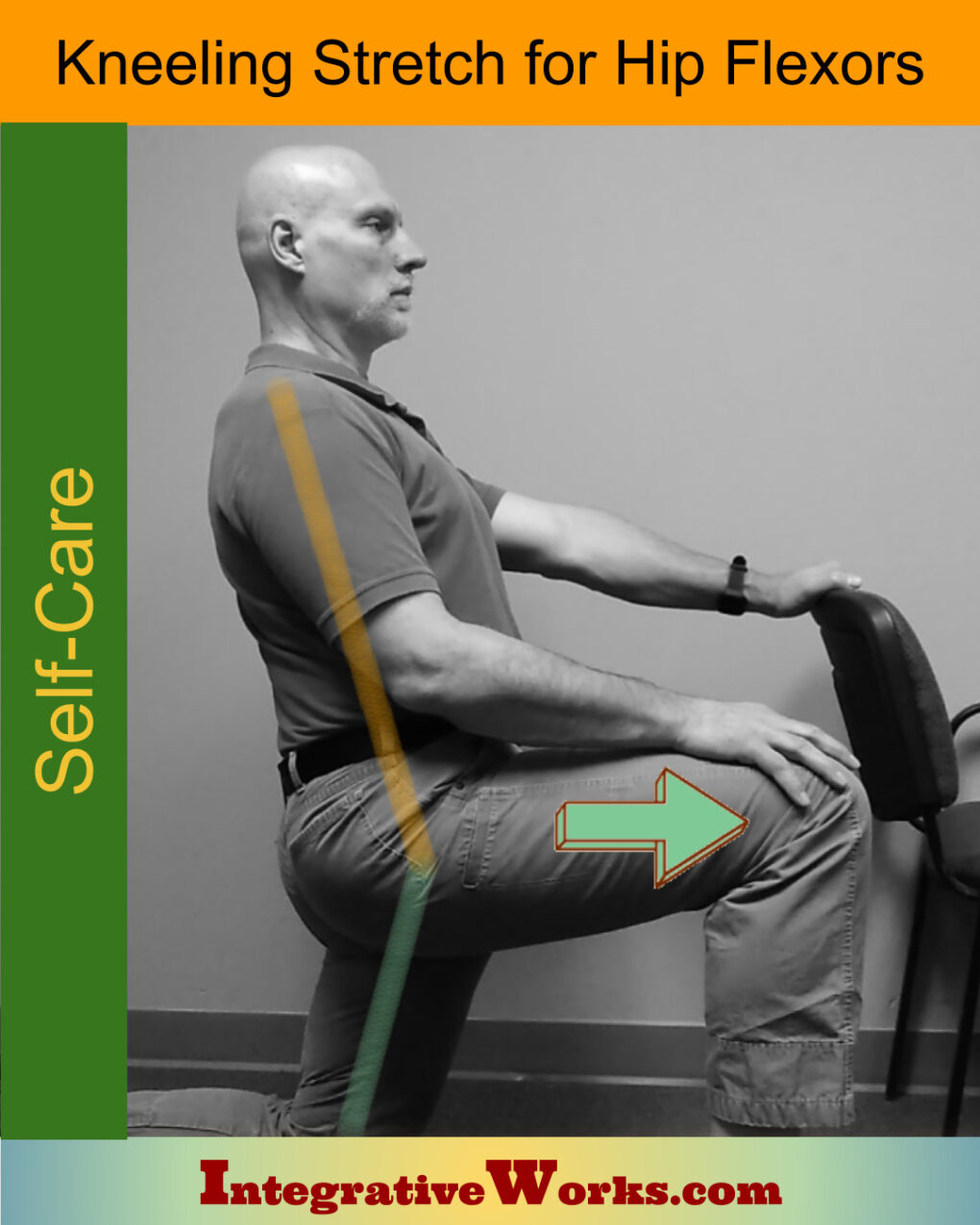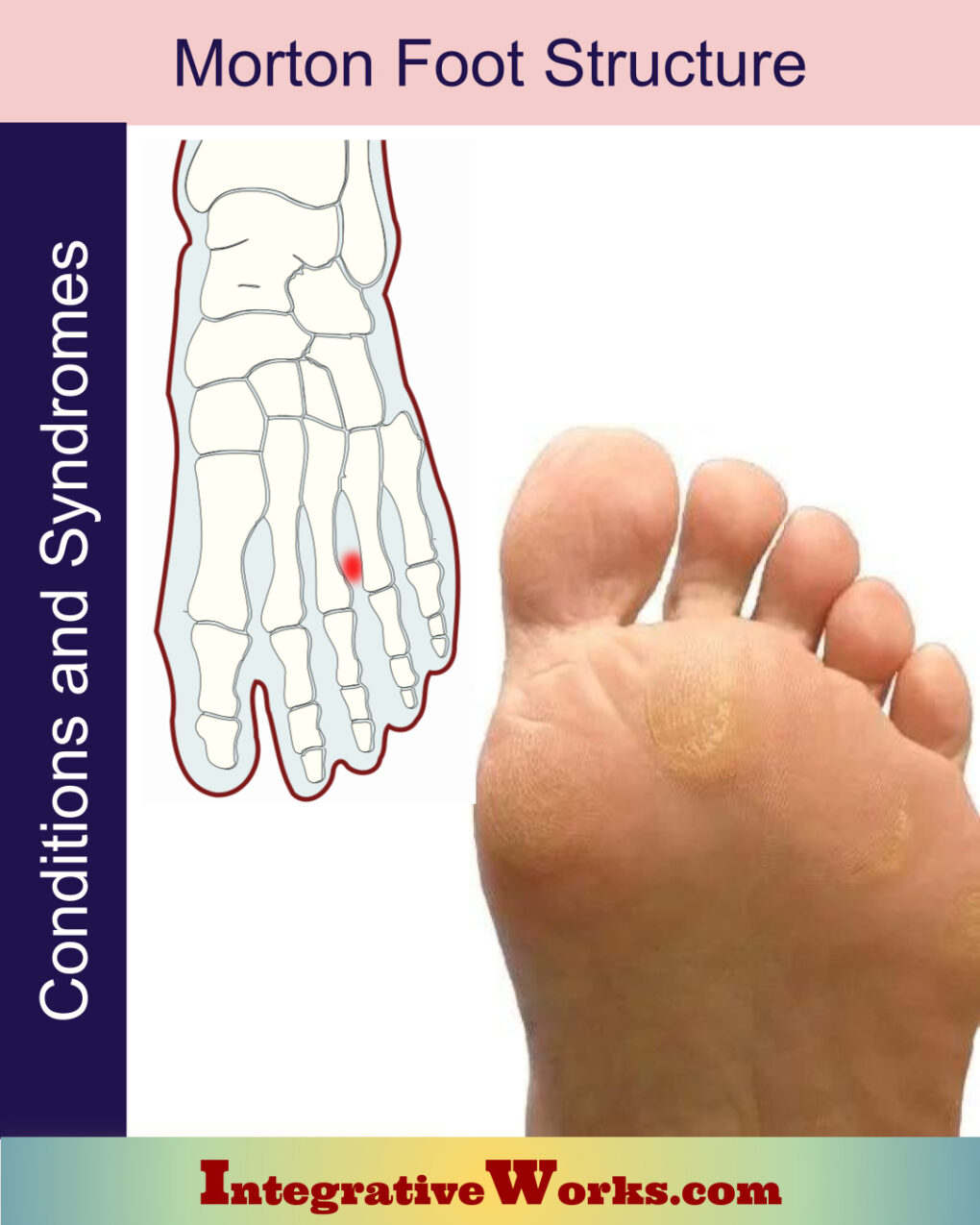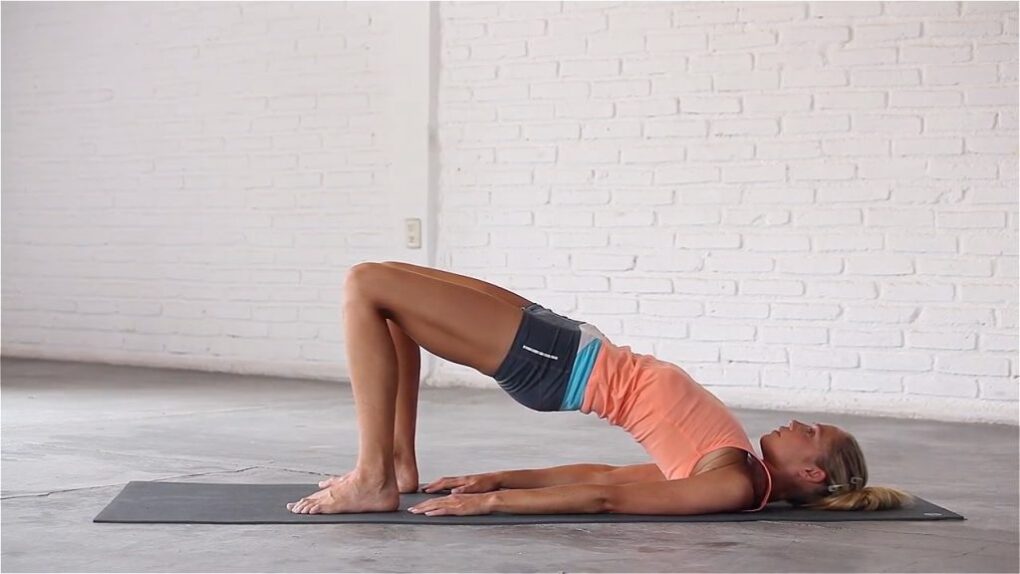Table of Contents
- Activities to Avoid or Change
- For Temporary Relief
- Stretches and Exercises for Longer-Lasting Relief
- Yoga Corner
Here, you will find self-care for pain in your knee cap. For more information about how people describe this pattern, look at this other post.
Activities To Avoid or Change:
Be Careful on Stairs and Inclines
Don’t hurry or run downstairs, especially on steep, curved, or cramped stairways. Never take stairs more than one at a time. Watch your step, especially the last one.
Avoid Uneven or Unstable Ground
Shifting sands and rocky terrain aggravate this condition. If you have some degeneration in your knee, this may send you to your therapist for work. But, first, try the remedies below.
Avoid Prolonged Immobilization
Theater, long drives, and conferences tend to involve long periods of being stuck in a spot. Work a little at
For Temporary Relief:
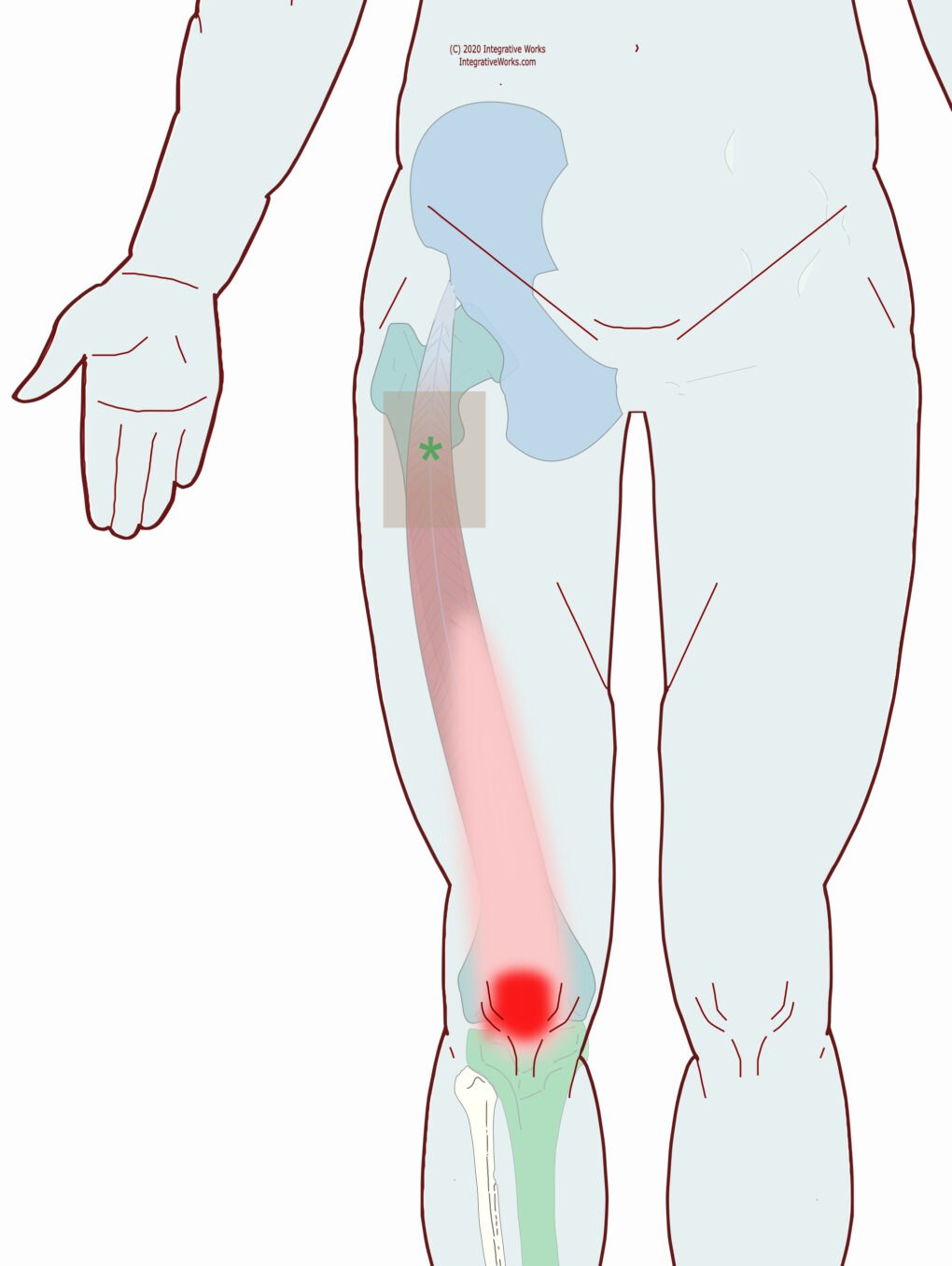
Pain Patch
Place a small pain patch in the center of your thigh close to your crotch. It will be more effective self-care than placing it on the pain on your knee cap. The vapocoolant in the patch dramatically reduces the activity of the trigger point. It’s amazingly effective. You can get these small patches at a reasonable price on Amazon.
People tend to prefer patches to avoid the cream’s scent, although there are creams with less odor. In addition, people prefer the cream on areas with lots of movement. Otherwise, the patch comes off easily. Also, the adhesive on the patch can irritate the skin, especially after a few days.
True Story
An old friend had this problem. First, he explained that it had become so active that it bothered him while he walked. In fact, it was tough getting up and down from a chair. So, I pulled out a small patch and put it on the top of his thigh. He explained that it didn’t hurt there. Ok. I had him walk up and down the hallway. Then, I had him sit and stand. Bewildered, he said the pain was gone, and the thigh was much better. Finally, he said this was too weird and that he wasn’t talking about it to any of our friends.
These self-care activities, like over-the-counter drugs, are not intended to replace appropriate medical attention. If you have concerns about these self-care activities, get help from a professional. Use these suggestions and strategies with discretion and at your own risk. See your doctor when your pain is severe, persistent, or not responding to these simple suggestions.
Stretches and Exercises for Longer-Lasting Relief:
Classic Standing Quad Stretch
This stretch is pretty standard. However, people struggle with getting it right. Notably, I spend a lot of time helping people with this simple stretch. Here are some pointers:
- Stabilize yourself with a wall. If you cannot do that, lay down and do this on your side.
- End with your thighs together and your foot behind you. Many people pull the foot out and twist the knee. Don’t.
- Pull our foot to your hip first, then try to bring your knees together. This sequence targets the top of the thigh near the trigger point. Don’t put your knees together first, then pull your foot up.
- This stretch is so much easier and more effective with the ice-and-stretch approach.
Kneeling Hip-Flexor Stretch
This kneeling stretch for hip flexors is a classic because it allows you to target the problem and gives you lots of control.
Some people have a problem with knee pain and use a pillow. However, the knee pain goes away once the rectus femoris opens up. A stroke of ice up and down the center of the thigh makes immediately increases the range of motion and reduces pain.
Go for gentle repetition and avoid forceful thrusting. This is a particularly useful exercise to implement ice-and-stretch.
The Active Body
If you’re more athletic, lunges are a much better solution for this pain in the knee cap. They are more active, restrain movement, mobilize joints and build stabilizers. Long stride walking lunges are great for this. Do 4 sets of 12 with a minute between sets.
Morton Foot Structure
Some feet have a bone structure that creates more instability than others. This foot rocking can perpetuate foot, leg, and hip pain. A more stable foot and gait can dramatically reduce pain in the lower extremity, especially the hip, and knee.
This condition can remain mild or lead to expensive treatments and even surgery. If you have this structure and some of its symptoms, take a look at this overview.
That post offers practical suggestions to reduce pain and increase stability on the foot. There are simple self-care suggestions, like inexpensive foot pads from Amazon. You can prevent advancing that foot problem, which can perpetuate the trigger points described here.
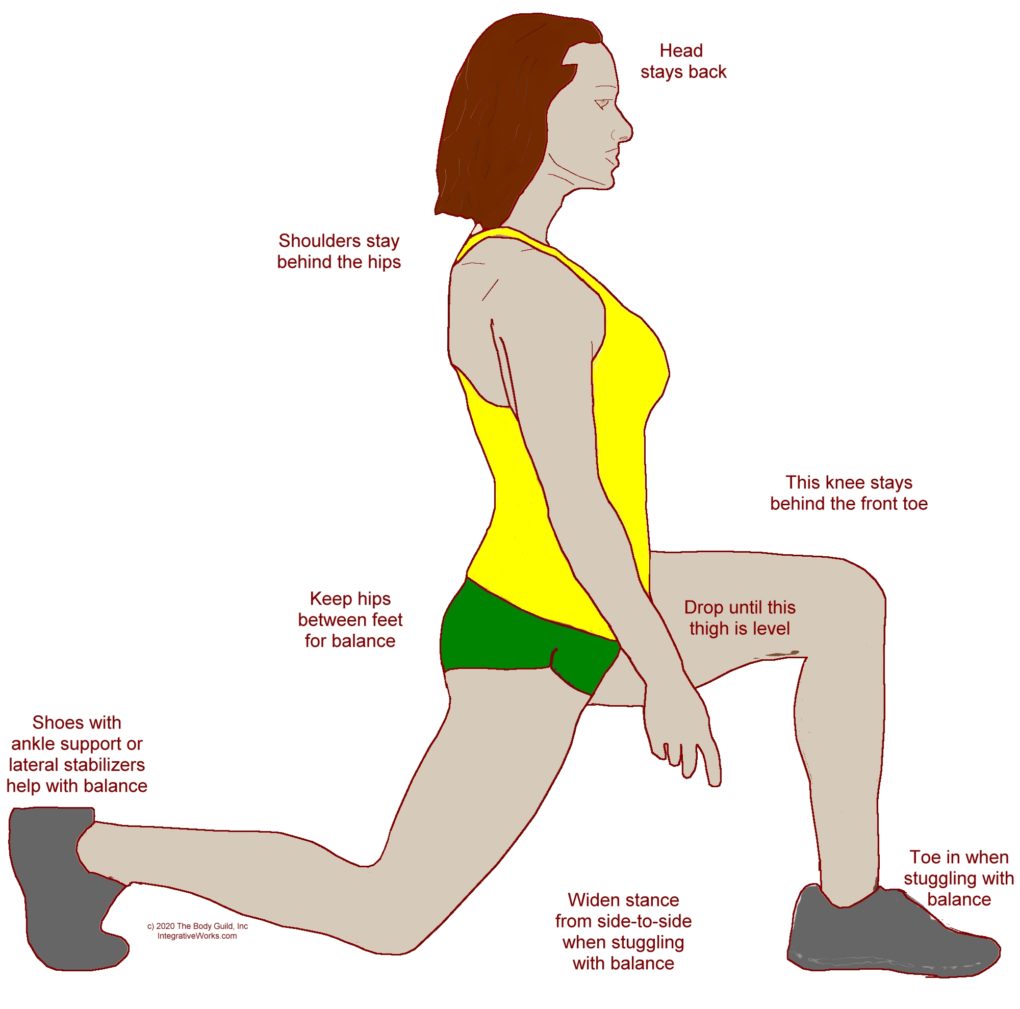
Walking Lunges
- Step forward so the front foot is in front of the knee and the back knee is behind your hips.
- Keep your shoulders back over your hips.
- Lower your torso until the front is level.
- Keep your knee behind your toes on the front leg.
- Widen your stance, turn your front toe in a tiny bit, and focus on keeping your hips between your feet if you are unstable.
- Step forward while minimizing how much your head and front shin lean forward.
- Do 6-10 reps on each leg.
I’d love your feedback on how this works for you and any suggestions you might have.
Email me at integrativeworks@gmail.com.
Yoga Corner
Avoid Kneeling Quad Openers
Kneeling will hurt. So, try bridges. Or high lunges where the back knee doesn’t touch. Also, Try this half-frog. You may be able to get back to kneeling or pigeon if you open this with dancer’s pose or bow pose.
Support Integrative Works to
stay independent
and produce great content.
You can subscribe to our community on Patreon. You will get links to free content and access to exclusive content not seen on this site. In addition, we will be posting anatomy illustrations, treatment notes, and sections from our manuals not found on this site. Thank you so much for being so supportive.
Cranio Cradle Cup
This mug has classic, colorful illustrations of the craniosacral system and vault hold #3. It makes a great gift and conversation piece.
Tony Preston has a practice in Atlanta, Georgia, where he sees clients. He has written materials and instructed classes since the mid-90s. This includes anatomy, trigger points, cranial, and neuromuscular.
Question? Comment? Typo?
integrativeworks@gmail.com
Follow us on Instagram

*This site is undergoing significant changes. We are reformatting and expanding the posts to make them easier to read. The result will also be more accessible and include more patterns with better self-care. Meanwhile, there may be formatting, content presentation, and readability inconsistencies. Until we get older posts updated, please excuse our mess.

